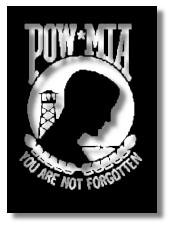Army Soldiers MIA from Vietnam War are Identified
 After 39 years the Family, Friends, and Comrades of Lt. Col. Marvin L. Foster, Capt. David R. Smith, Sgt. 1st Class Michael L. Batt, and Sgt. 1st Class Raymond E. Bobe can finally close this chapter of their lives and open another.
After 39 years the Family, Friends, and Comrades of Lt. Col. Marvin L. Foster, Capt. David R. Smith, Sgt. 1st Class Michael L. Batt, and Sgt. 1st Class Raymond E. Bobe can finally close this chapter of their lives and open another.On March 16, 1969, the aircraft Capt. Smith was piloting, an Army U-21A “Ute” left Qui Nhon airfield in South Vietnam, headed for Phu Bai airport near Hue. The Da Nang control tower was unable to maintain radar and radio contact. The aircraft never landed at the Phu Bai airport. Passengers on board were Foster, Batt, Bobe and one other passenger aboard whose remains have not been identified.
Combat search and rescue searched land and sea, for the eight days, but did not find the missing aircraft.
Welcome home LTC Foster, CPT Smith, SFC Batt, and SFC Bobe. May God bless you and your families, friends and comrades.
Following is the DoD Release.
July 15, 2005
DoD Release # 720-05
Army Soldiers MIA from Vietnam War are Identified
The Department of Defense POW/Missing Personnel Office (DPMO) announced today that the remains of four U.S. servicemen, missing in action from the Vietnam War, have been identified and are being returned to their families for burial.
 They are Lt. Col. Marvin L. Foster, Hubbard, Tex.; Capt. David R. Smith, Dayton, Ohio; Sgt. 1st Class Michael L. Batt, Defiance, Ohio; and Sgt. 1st Class Raymond E. Bobe, Tarrant, Ala., all U.S. Army.
They are Lt. Col. Marvin L. Foster, Hubbard, Tex.; Capt. David R. Smith, Dayton, Ohio; Sgt. 1st Class Michael L. Batt, Defiance, Ohio; and Sgt. 1st Class Raymond E. Bobe, Tarrant, Ala., all U.S. Army.On March 16, 1969, Capt. Smith was piloting an Army U-21A “Ute” aircraft with Foster, Batt, Bobe and one other passenger aboard whose remains have not been identified. The aircraft left Qui Nhon airfield in South Vietnam, headed for Phu Bai airport near Hue. The Da Nang control tower briefly established radar and radio contact, but was unable to maintain it. The aircraft never landed at the Phu Bai airport.
Combat search and rescue units scoured the area, both land and sea, for the next eight days, but did not find the missing aircraft.
In 1988 and 1989, the Vietnamese government turned over to U.S. specialists several boxes of human remains, including identification tags for Bobe and Smith. The technology at the time failed to yield an identification of the remains. Also in 1989, a Vietnamese refugee in the Philippines was interviewed, and turned over human remains as well as a rubbing of an identification tag for Bobe.
U.S. specialists from the Joint POW/MIA Accounting Command (JPAC) conducted seven investigations between 1993 and 1999, to include interviews with Vietnamese nationals who claimed to have knowledge of the crash. Then in April and May of 2000, a JPAC team excavated an area about 25 miles northwest of Da Nang, where they found aircraft debris and human remains.
JPAC scientists and Armed Forces DNA Identification Laboratory specialists used mitochondrial DNA as one of the forensic tools to help identify the remains.
Of those Americans unaccounted for from all conflicts, 1,827 are from the Vietnam War, with 1,393 of those within the country of Vietnam. Another 756 Americans have been accounted for in Southeast Asia since the end of the Vietnam War. Of the Americans identified, 528 are from within Vietnam.
For additional information on the Defense Department’s mission to account for missing Americans, visit the DPMO website at http://www.dtic.mil/dpmo/ or call (703) 699-1169.
A side note. My "Tour of Duty" was in the Qui Nhon area. I was assigned as a battalion medic with the 299th Engineer Battalion (Combat) in Phu Tai, south of Qui Nhon.














<< Home